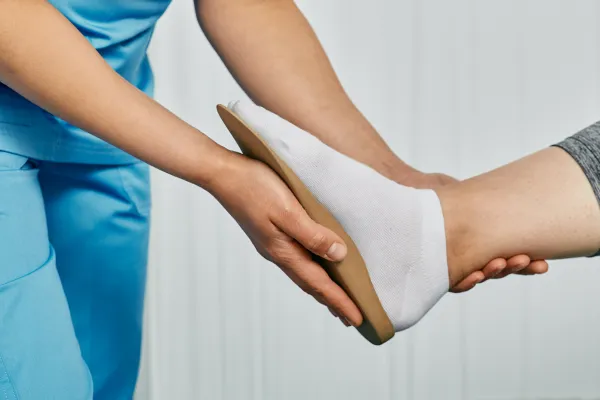
How Often Should I Replace My Insoles or Orthotics?
Have you been wearing the same insoles for years?
If so, you might be surprised to learn that they don’t last forever. Just like your favourite trainers, insoles and orthotics gradually wear down over time, and once they lose their shape or cushioning, your feet—and the rest of your body—can feel the impact.
Why Replacing Insoles and Orthotics Matters
Insoles and orthotics do a lot of heavy lifting (literally!) every single day. They cushion your feet, help keep your posture and walking pattern in check, and can ease or prevent pain from conditions like plantar fasciitis, bunions, or arthritis. But constant pressure and movement cause them to compress, crack, or warp. When that happens, your body won’t get the same support, which can lead to new aches and pains in your feet, knees, hips, or back, or make an existing condition worse.
How Long Do They Last?
As a general rule, over-the-counter insoles will last around six to twelve months with regular use. If you use them for sports or high-impact activities, they may wear out even sooner. Custom orthotics, which are designed to be more durable, can often last between one and three years, but they still need regular checks to make sure they fit and function properly. Sports-specific orthotics, even when custom-made, tend to wear out more quickly due to the extra stress placed on them.
Signs It’s Time to Replace Them
Even if you can’t remember exactly when you bought them, your insoles or orthotics will often show clear signs that they’re ready for retirement. Cracks, tears, or flat, compressed areas are easy to spot. A persistent odour, even after cleaning, is another clue. If you notice your old foot pain creeping back, your shoes feeling less supportive, or the orthotics no longer sitting properly inside your footwear, it’s time for a replacement.
Why Some Wear Out Faster
How long your insoles last depends on a few factors. If you’re on your feet a lot, run regularly, or walk long distances, they’ll break down more quickly. Body weight also plays a role—more pressure means more compression over time. If you wear your orthotics in multiple pairs of shoes, it can help spread the wear but might also cause them to lose shape if the shoes are very different in design. And don’t forget the environment—moisture, heat, and dirt can all speed up deterioration.
How to Help Them Last Longer
A little care can go a long way. Rotate between pairs if you can—one set for work shoes and another for trainers or casual footwear. Remove them from your shoes after use so they can air out, and wipe them down with a damp cloth every so often. Store shoes (and the insoles inside them) somewhere cool and dry, away from direct heat sources like radiators.
When to See a Foot Pain Specialist
If you’re not sure whether your orthotics are still doing their job, or if pain has returned despite wearing them, it’s worth booking an appointment with a Foot Pain Specialist in Birtley. At Birtley Foot Clinic, we can check your insoles, assess your gait, and let you know whether they can be repaired, adjusted, or if it’s time for a brand-new pair.
Think of insoles and orthotics like the tyres on your car—they’re essential for performance and safety, but they don’t last forever. A quick check every six to twelve months can save you a lot of discomfort and prevent small foot problems from turning into big ones.



